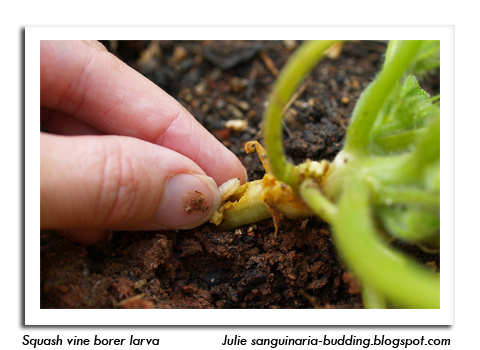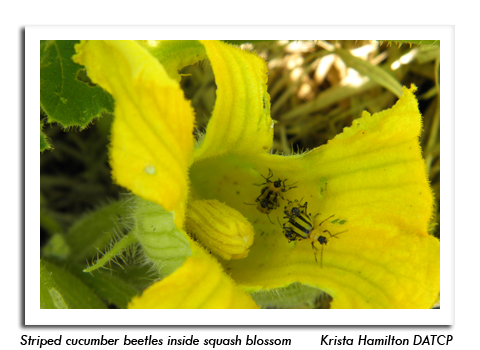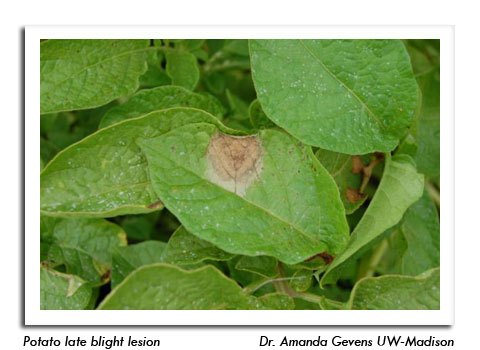
 |
|
|
Vegetables
Volume 60 Number 11 Date 07/02/2015 SQUASH VINE BORER - Early-stage larvae are excavating squash stems and runner vines, causing plants to wilt. Closer examination of the vines should reveal entrance holes from which their sawdust-like frass is expelled. Continued inspection of pumpkins, squash, gourds, and other vine crops for eggs and evidence of larval feeding is advised for another two weeks. Insecticidal controls are only effective if applied before the larvae bore into vines and reapplication may be required during the adult flight period now under way. Squash varieties most susceptible to infestation are 'Blue Hubbard', 'Boston Marrow' and 'Golden Delicious', while 'Butternut', 'Dickenson pumpkin' and 'Green Striped Cushaw' have shown some resistance. CABBAGE CATERPILLARS - Populations of diamondback moths and imported cabbageworms are reportedly high in southern and western Wisconsin cabbage plantings. The larvae of these cabbage pests feed on leaves and cause large ragged holes, eventually infesting the developing heads of broccoli, cabbage and cauliflower. Treatment thresholds are reached when 10% of cabbage in the early heading to mature head stages are infested, or 10% of broccoli and cauliflower in the first flower or curd to maturity phase are damaged. Cole crop growers are reminded that imported cabbageworms, diamondback moths and cabbage loopers are considered to be a single caterpillar complex, and the same infestation threshold applies to all three species. Bacillus thuringiensis (Bt) and chemical insecticides are effective forms of control. SQUASH BUG - Adults are feeding and reproducing on cucurbits from Grant to La Crosse County, and populations are expected to increase sharply by mid-July with the addition of many small nymphs. Insecticide options for commercial plantings include synthetic pyrethroids (e.g. Brigade, Mustang, Pounce, Warrior, etc.) or neonicotinoids (Assail, Belay, Scorpion and Endigo). Organic growers should use directed applications of pyrethrum (PyGanic) or the pre-mix with azadirachtin (Azera). An average of one egg mass per plant when plants are flowering is recommended as the basis for initiating treatment. For home gardens, soapy water or carbaryl treatment provides some control but repeated applications are usually needed. STRIPED CUCUMBER BEETLE - Extension personnel and vegetable growers continue to report considerable damage to cucurbits. Control may be justified for populations of one beetle per plant in melons, cucumbers and young pumpkins, and five beetles per plant for less susceptible cucurbits such as watermelon and squash. LATE BLIGHT - Late blight was confirmed for the first time this season in an Adams County potato field on June 23. Dr. Amanda Gevens emphasizes that conditions have been favorable for this disease and anti-sporulant fungicides are critical for protection of potato and tomato crops at this time. Scouting efforts should also be intensified and concentrated on higher risk areas such as field corners and areas sheltered by trees, where late blight symptoms generally first appear. Registered fungicides for late blight in Wisconsin are listed at the UW-Madison Vegetable Pathology website: http://www.plantpath.wisc.edu/wivegdis/pdf/2015/Potato%20Late%20Blight%20Fungicides%202015.pdf -- Krista Hamilton, DATCP Entomologist 




|
|
|